The desire to fill the diet with useful vegetable products pushes dacms to the cultivation of new vegetable crops. Recently, the cultivation of exotic plants with excellent nutritional properties, in particular, dike is gaining popularity. For many gardeners, this is a completely new culture, so you need to know when and how to grow Daikon, how to care for him and keep a crop.
Daikon, description
- Dykon is a culture, the birthplace of which is considered to be Japan. This delicious representative of the cruciferous family is a close relative of the radish, but unlike radish, there are no mustard oils in the Daikon. For this reason, he owns a weak aroma.
- Daikon is the fruit of the work of breeders from Japan. Behind him was a view of the radish of the Loba.
- For centuries, Daikon remains a popular product of Japanese cuisine. It is present in many soups, marinades, meat and fish dishes, vegetable casseroles. In Chinese cuisine, Daikon is impossible to imagine without mushrooms Shiitake, and in the kitchen of the eastern European countries, Daikon is the honed ingredient of vegetable salad with cream.
- Daikon is grown as a plant with a one-year cycle. Daikon vegetation period from 40 to 180 days.
- Initially, a solid socket is formed, which consists of 25-40 leaves. Then grows a large root roof, which is much more than ordinary rare.
- The average weight of the root of 1-3 kg, however, there are varieties growing up to 20 kg. The length of the vegetable is within 10-60 cm. Dicon variable and each variety has its own - round, ovoid, serpentine, conical.
- Dike juicy pulp, it has a delicate taste and light aroma. From him should not be waiting for sharpness and bitterness, as from radish or radish.
- Dike reproduction passes only by the seed method.
Popular Daicon varieties
At the homeland of Daikon, in Japan, about 400 of his varieties is cultivated. We successfully grow no more than 30 varieties.
- The shogin is a major root, has a rounded shape, it grows perfectly even on heavy earth.
- Sirogari - cylindrical fruits of average values \u200b\u200bup to 30 cm.
- Miasiege is one of the largest types. The fruits of the cylindrical shape look out from the soil half.
- Tokinasi - Sweet Daikon, designed for growing on thin lands.
- Nerima - a vegetable in shape resembles a thick spindle. When creating suitable conditions, it is grown to 70 cm long. The flesh of cream color, fragrant, fleshy.
- Ninengo is a variety with excellent cold-resistant properties, the fruit is up to 40 cm long, completely "recessed" into the ground.
- Minovasi - drought-resistant variety of cylindrical shape with a conical ending. Puffed in a mere of juicy, milky white color.
- Dragon is a mid-view. Snow white flesh, dense, fibrous.
- Dubyushka is a variety with gentle white root roots. It has an increased yield, it is good fruit in the open soil.
- Sasha - Round shape grade, weighing up to 0.4 kg. Resistant to bacterial diseases.
- Sugar rose is another early grade with small roots. The pulp is painted in a gentle pink color, with a gentle pleasant taste.
Dike landing, seed sowing rules
To reduce the risk of possible freezing of young shoots, as well as to get an earlier harvest, radish often grown seedling method.
Seedbed preparation seeds daikon
Daikon grains is subjected to stress in order to increase the germination percentage. Seeds poured into a thermos, poured with water + 50⁰S. After 20 minutes the seeds with cold water, drained it sends seeds for 24 hours in a refrigerator.
Radish, seedling cultivation
Grow the seedlings like this:
- Sow the seeds in peat pots. If you use other containers, the total height - it must be at least 10 cm.
- Pots filled with loose and moist soil.
- In one container sown a few seeds produced. cultivation depth - 2 cm.
- The pots are covered with foil and place in a warm room.
- After 7 days, when the hatch seedlings, greenhouse removed. Seedlings transferred to a brighter place.
- When formed pair of leaves, all the weak seedlings removed to give a stronger instances fully develop.
Advice! Daylight hours should be about 6 hours. Longer light effect will contribute to active growth of greenery, not root.
Care daikon sprouts
Care for young growth is simple. You will need timely soil moisture, its loosening. After thinning is necessary to fertilizing seedlings. Suitable liquid mineral mix.
Planting in open ground daikon
Cultivation Japanese radish easily mastered gardeners different regions of Russia. However, planting dates are slightly different in different areas.
- In the south, as well as in the middle zone of the seeds sown in early spring, at least - in the fall. If you have time to carry out all the planting, keeping pace with harvest by the end of June.
- In Siberia and the Urals, Japanese radish is grown exclusively in greenhouses to prevent young growth be frozen at night. Without cover crop of daikon in these regions is very difficult to grow, because the heavy rains, strong winds and low temperatures - by no means ideal conditions for growing daikon.
Although the Japanese radish is a cold-resistant culture, this does not mean that it will grow in the cold and lack of sunlight. For the full development of the plant requires at around + 10⁰S and higher temperature. If daikon is long in the cold, its yield drops significantly.
Advice! To avoid fatal errors in the cultivation of Daikon on a garden in harsh climatic conditions, keep in mind that it is better to grow early grades, so that Daikon manage to give a harvest to cold weather.
Dates of planting Diycon.
In the open ground, you can plant a dycon as the method of direct sowing of seeds and a seed basis. The appropriate option is chosen taking into account the varietal features of the plant: rounded fruits are better to grow with a seedy method, and elongated better soaring directly to the garden to eliminate the risk of damage to the root damage during transplantation.
In the open soil, the dike seeds are sown between April 20 and May 10. If you need to plant seedlings, it is possible to do this after the appearance of two pairs of true leaves.
Soil preparation for dike landing
Dykon easily adapts on various soils, which makes it a very profitable vegetable culture in terms of cultivation. However, gardeners do not recommend leaving the soil in which Daikon will grow, without attention. It is important to pay attention to such nuances:
- Productivity can be significantly improved if you put a dycon into a loose ground.
- The soil should be with a weak or neutral reaction. If the acidity is too high, you can make lime, but separately from fertilizers.
- Enrich the soil is better than autumn. Suitable humid, superphosphate, as well as sulfate potassium.
- Plant Dykon in places where radishes were previously cultivated, garlic or cabbage should not.
Planting in open ground daikon
The plant's beds are planted under scheme 30 by 60 cm. Observe the width of the rod - at least 55 cm. Between bushes withstand about 30 cm.
The landing is carried out in a pre-moistened soil, after planting it is plugged and mulched. In the event of a threat to freezing, seedlings are covered with film.
Sowing seeds are carried out like this:
- Make holes on the same scheme - 30x60 cm.
- In each hole, 2-3 grains are immersed and cultivated on 2 cm deep into.
- After sowing, the soil spraying, mulching peat and the shelter of crops by agrofluorine.
Dike landing under winter
Daikon is distinguished by the ability to produce arrows, especially in sunny weather. This reduces the yield, so the gardens often sow a dickeon under the winter. But it is difficult to name this method of planting late, because seeds seed in August-September.
The disadvantage of this method is that the fruits of Dicon almost always do not have time to achieve their sizes and have a much smaller mass. In addition, you have to more carefully prepare seeds and soil for dike.
Care for Daekon
You will need modest care, which consists of the most elementary events.
Watering Diycon.
- During the vegetation period, the plant is recommended to maintain a stable level of soil moisture. The first watering is carried out after germination of seeds.
- In conditions of moisture deficit, Daikon releases the arrows, its fruits are cracking, the harvest is poor. Therefore, it is necessary to carry out watering twice a week, and in the heat - daily.
- Soil loosening is desirable to spend weekly. It is useful to ease the ground after a rich watering or rain.
Undercotting Daikona
If the vegetable is grown on nutritional soils, the question of making minudes does not occur. If the soil poverty is carried out feeding. For this, 4 liters of liquid manure and 2 g of potassium sulphate are divorced in 5 liters of water. Fertilizer is brought together with watering.
Dike harvesting and storage
- Speakers Daikon in 40-65 days from the date of shoots. Kornefloda is removed until the moment of sharp cooling.
- Dickens in the soil undesirable, otherwise it will begin to produce arrows, crack and lose taste.
- Collect fruits in dry weather. If the soil is loose, it is enough to pull the tops, and the dykon will easily come out of the ground.
- The roots are decomposed and dried, then they are cleaned from the remnants of the Earth, cut off the tops.
- Store vegetable at a temperature of 0 ... + 5⁰s. If you put a crop in a box with the ground, it will retain freshness until the end of winter.
Dyacon diseases and pests
- The main problem that may occur - the damage of daikon fungi. The cause of Daicon's disease is a combination of high humidity and hot weather. For the prevention of crop loss, disinfection of seeds and soil is required before planting, timely destruction of weeds, the right watering. If the fungus appeared, the bushes are treated with binoramic or planery.
- Occasionally, Daikon is amazed with viral mosaic. The treatment of infected plants is not amenable to treatment, so they are disposed of.
- From pests on Daikon, flies and cabbage flews can dwell. For processing use tincture of burning pepper: 5 pcs. Capped with a liter of boiling water, after 12 hours they focus, dilute 10 water and spray bushes.
Dycon is indisputable very valuable food. And minor efforts that you invest in the cultivation of Japanese radish will be fully accumulated.


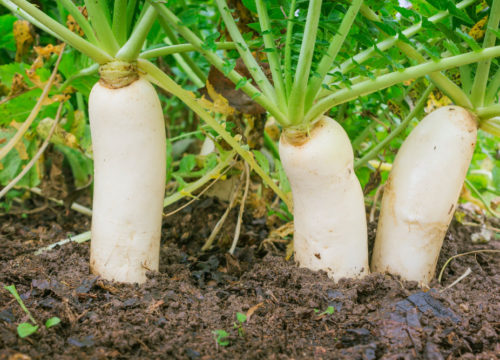


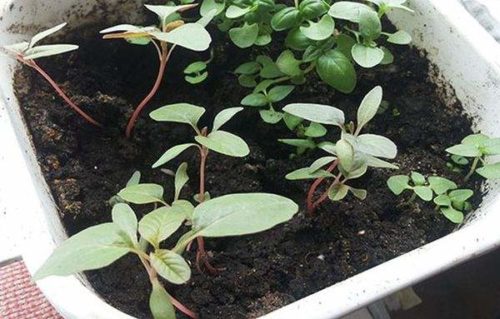

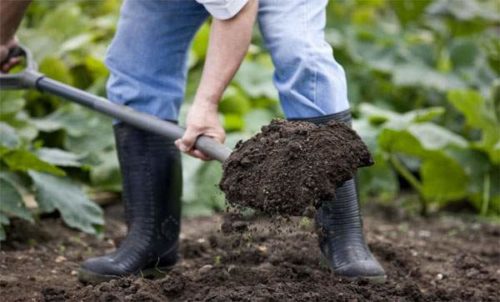
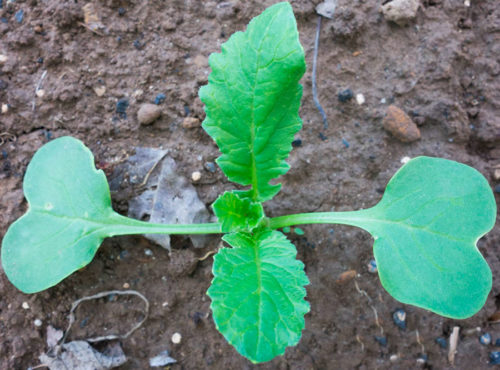
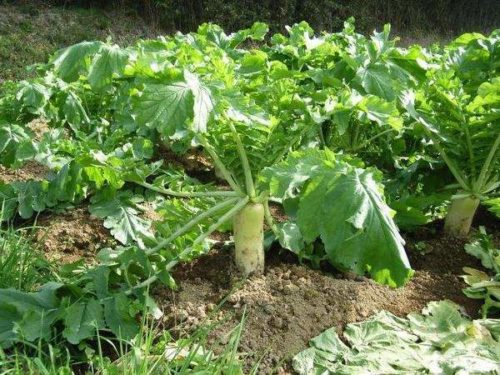
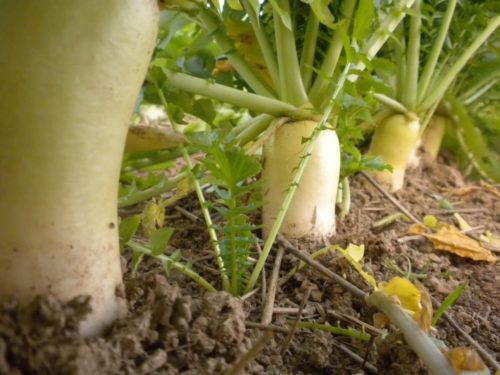
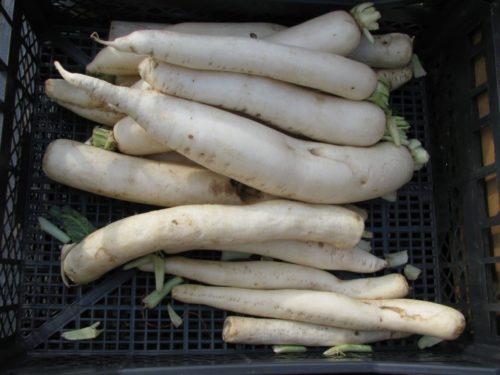

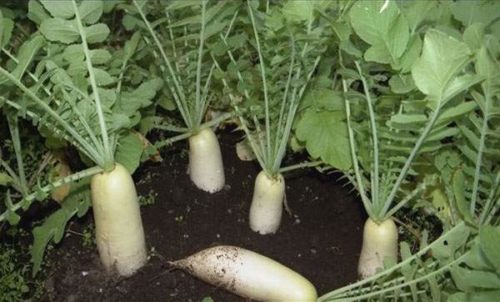
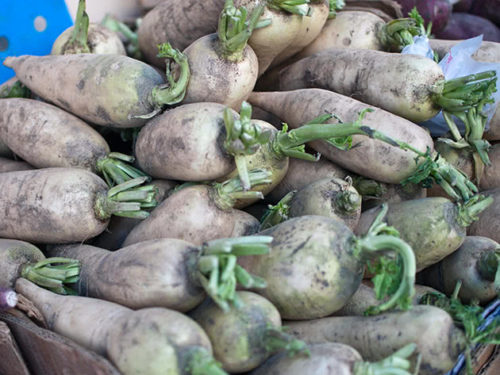












 Start a discussion ...
Start a discussion ...